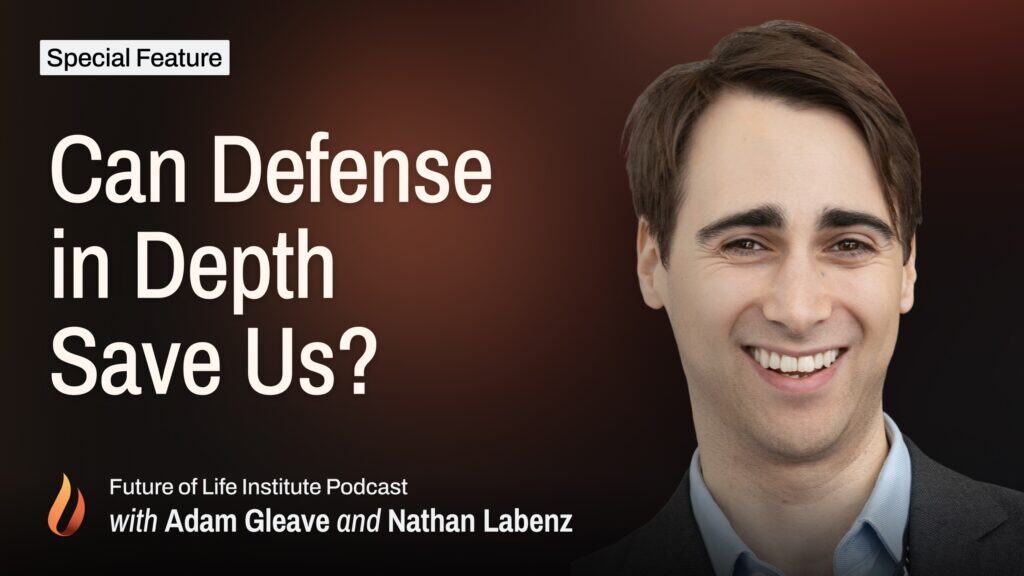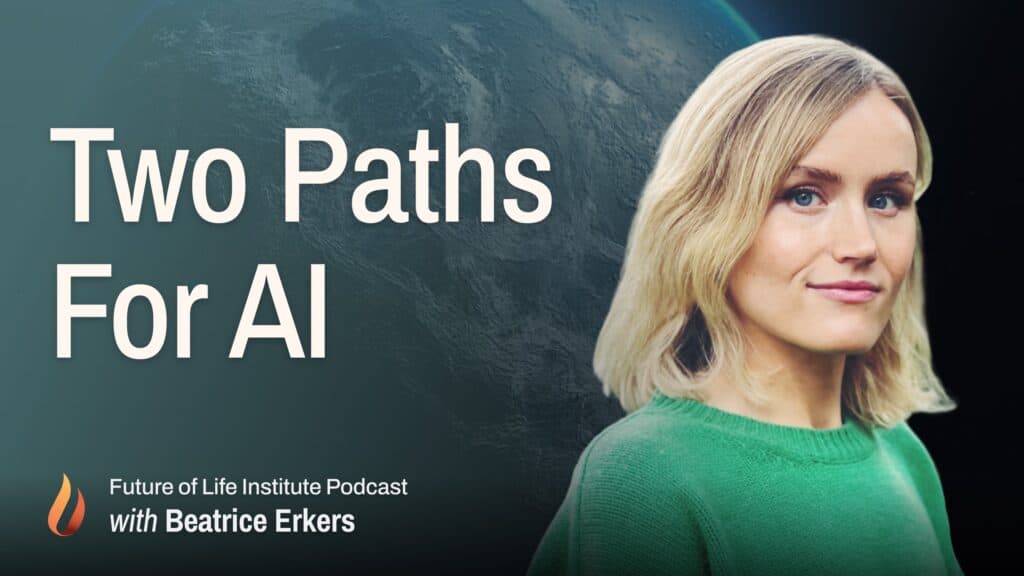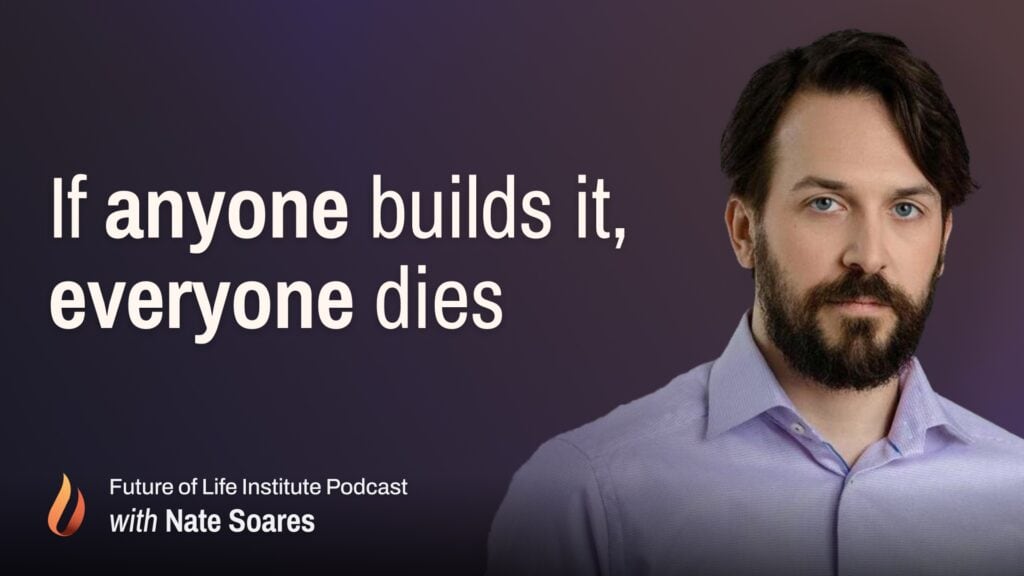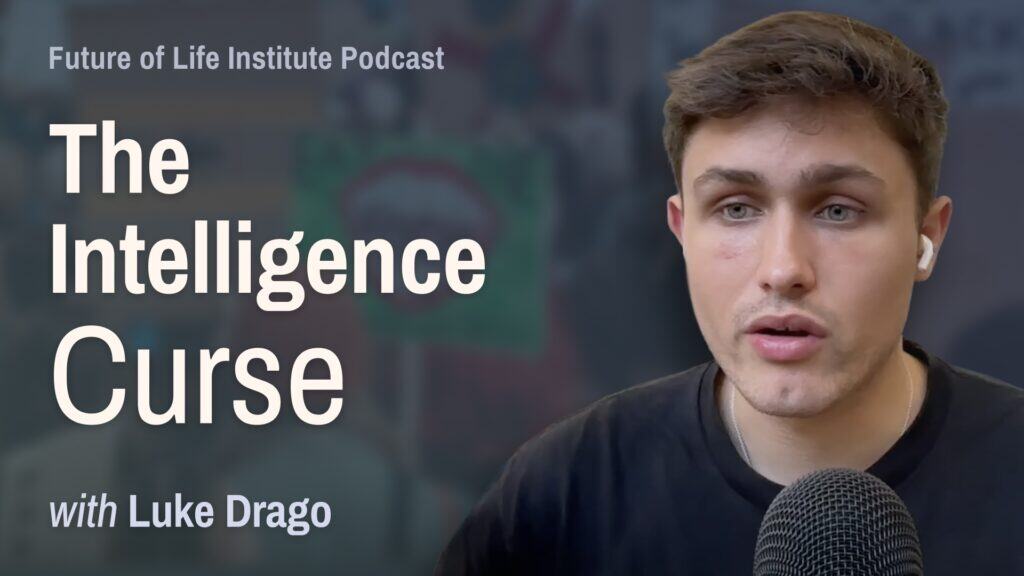Not Cool Ep 11: Jakob Zscheischler on climate-driven compound weather events
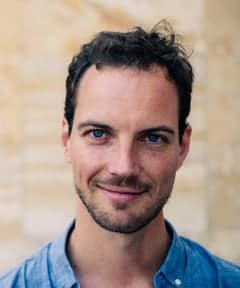
While a single extreme weather event can wreak considerable havoc, it's becoming increasingly clear that such events often don't occur in isolation. Not Cool Episode 11 focuses on compound weather events: what they are, why they’re dangerous, and how we've failed to prepare for them. Ariel is joined by Jakob Zscheischler, an Earth system scientist at the University of Bern, who discusses the feedback processes that drive compound events, the impacts they're already having, and the reasons we've underestimated their gravity. He also explains how extreme events can reduce carbon uptake, how human impacts can amplify climate hazards, and why we need more interdisciplinary research.
Topics discussed include:
- Carbon cycle
- Climate-driven changes in vegetation
- Land-atmosphere feedbacks
- Extreme events
- Compound events and why they’re under researched
- Risk assessment
- Spatially compounding impacts
- Importance of working across disciplines
- Important policy measures
References discussed include:
- An emerging tropical cyclone–deadly heat compound hazard,
- DAMOCLES: Understanding and modeling compound climate and weather events
- Columbia University Workshop on Correlated Extremes
Climate change can change the individual variables contributing to the compound event or the dependence between them. And then there might be new types of compound events that haven't been relevant in previous conditions.
~ Jakob Zscheischler
Transcript
Ariel Conn: Hi everyone, and welcome to episode 11 of Not Cool, A climate podcast. In Episode 10 we heard from Stephanie Herring who spoke quite a bit about extreme weather events. Today we’ll hear from Jakob Zscheischler about what happens when those extreme weather events occur back to back or in conjunction with each other, and why we’re so unprepared when these types of compound extreme events do occur.
Jakob is an Earth system scientist with a background in mathematics, biogeochemistry and climate science. He uses sophisticated statistical approaches to infer new insights from a variety of datasets, including remotely sensed data, station measurements, reanalysis data, and model output from climate, vegetation and other impact models. Currently his research focuses on better understanding compound events.
Jakob, thank you so much for joining us.
Jakob Zscheischler: Thank you for having me.
Ariel Conn: I want to go back to basics a little bit and start by asking you about some of the research you did during your PhD on the carbon cycle and how drought and heat impacts that. And I was hoping you could first start by reminding us of what the carbon cycle is and how that works.
Jakob Zscheischler: Yeah. Okay. So, I’ve worked a lot on the carbon cycle on land and basically the land biosphere takes up a lot of carbon every year and also releases carbon. So we have a cross carbon uptake of about 120 petagrams per year, and a similar amount gets released by respiration, by fires, by soil microbes — but there's a carbon net sink of about maybe two to three petagrams at the moment, which means that the land biosphere sucks up carbon from the atmosphere and by this, slows down the increase in atmospheric CO2 concentration that we cause by emitting CO2 through fossil fuel emissions, for instance.
Jakob Zscheischler: So, currently about a fourth of our fossil fuel emissions are taken up by the land biosphere, but we don't really know whether this will continue into the future and how much of this sink activity — whether this will increase or decrease, and the carbon cycle climate models that we use, they are quite uncertain on that. And the land biosphere or the terrestrial vegetation experiences a drought or a heat wave: Typically, the carbon uptake is reduced substantially and we might even lose carbon to the atmosphere.
So, during drought and heat events the sink activity is substantially reduced and if drought and heat events increase with future climate change, for instance, then this might also lead to a stronger reduction in this uptake activity of the biosphere.
Ariel Conn: If we're experiencing global warming, can we assume that the earth will not be absorbing the carbon or is there still a chance that we could still be okay?
Jakob Zscheischler: There are different processes happening at the same time. On the one hand, with warmer temperatures, for instance in the higher latitudes, this is beneficial for forests. So, forests are expanding in the northern latitudes. We actually see a greening globally, even. So, there's an increase in leaf area globally, but at the same time in some other areas, plants reach their limits; For instance, in the tropics, some plants might reach their temperature limits and then die due to drought or heat.
And the uncertainties in the models come also because of what we call CO2 fertilization. So, with higher CO2 concentrations in the atmosphere, plants are more efficient. They lose less water while taking up the same amount of carbon and they can uptake more carbon. Therefore, they are less sensitive to droughts. So, it could be also that plants actually like a warmer and more CO2 rich climate much more and grow better, but the models that we currently have somewhat disagree which effect will dominate, and that's where the uncertainties come from.
Ariel Conn: So, even if we do get a situation where we're seeing plants liking the hotter weather, can we still expect to see shifts in what plants are growing in different areas — that idea that what humans are used to in their current location might still not be the same?
Jakob Zscheischler: The vegetation composition will change and is already changing in some areas. The question is how quickly plants can adapt to these changes. So for instance forests, and trees in general, are long lived species. So, if climate is changing more quickly than forests can adapt or new tree species can grow, then this might be really difficult for the plants and we might actually lose more carbon then in these situations. It's a matter of how quickly climate change is happening, but also these things are difficult to model into the future. So, a lot of models have a dynamic vegetation that adapts to these new climate conditions, but of course it's very challenging to model this correctly.
Ariel Conn: If I understood it correctly, some of your research has found that heat and drought are more likely to occur together, as opposed to maybe heat and more moisture in the air. Is that correct?
Jakob Zscheischler: Yeah. So I got into this topic by looking at situations where the terrestrial vegetation loses a lot of carbon and I tried to understand what are the climatic drivers behind these conditions, and it's typically a combination of drought and heat. And so I looked into what this actually — the likelihood that drought and heat co-occur and in which places do they co-occur more frequently than in others. And typically, drought and heat conditions are strongly correlated in a lot of places, particularly in mid-latitude regions. For instance, in areas like central Europe, drought and heat are correlated because of land-atmosphere feedbacks. If you have a dry spring, for instance, and then we have an atmospheric blocking event, a high pressure system, then the soil gets heated up and there's less evaporative cooling because the soil is already dry, which then leads to even higher temperatures and then even more evaporative demand. So, even more drying out the soil. So, there's a feedback process and it creates these correlations between dry and hot conditions.
Ariel Conn: So, you sort of transitioned into looking at more extreme events, I think still connected to drought and heat. Can you talk about what extreme events look like? Or maybe define what an extreme event is.
Jakob Zscheischler: An extreme even, such as drought and heat or a heavy precipitation events, typically just events in the tail of the distribution. So if you look at the temperature distribution, a heat event is at the upper tail of this distribution. So we usually say above the 90th percentile, or a temperature that is higher than a certain threshold. Can do the same for dry conditions: We look at if the precipitation deficit is particularly large; or for storms, if wind speed is very large.
So, for a long time, people have looked at these extremes individually. So, we have experts on heat waves, we have experts on droughts, experts on heavy precipitation events and storms; But for impacts — as I have just discussed for the carbon cycle, for instance, but also for agriculture, for instance — these combinations of extremes are particularly harmful. And if we estimate occurrence probabilities from only one type of extreme, from one hazard — let's say only heat waves — and combine this with risk estimate from droughts, then we might underestimate the risk when the heatwave and the drought occur together if they are correlated.
Ariel Conn: Can you give a little bit more detail about what these compound events look like? I think one of your papers you give the example of what happened in Russia in 2010. Maybe you could describe that?
Jakob Zscheischler: Yeah. So, Russia is kind of a prime example for a compound event. So, we define compound events as a combination of climate drivers or hazards that contribute to societal or environmental risks. So for us, compound events are multiple things in the climate domain that contribute to risk. In the case of Russia, we had a precipitation deficit earlier in the year in 2010 — this happened in 2010 — and then we had a very persistent blocking event in western Russia, a very stable, high pressure system that stayed there for a long time. And that led to very high temperatures. In combination with the dry soils, the temperatures got higher and higher, and then this triggered wildfires in large parts of western Russia, destroyed large amounts of Russian crops, and created a lot of air pollution that then killed a lot of people.
So, overall, more than 50 thousand people died in this event — largely due to air pollution, but also heat stress. Another important impact was the agricultural loss: About 25 percent of Russian crops were destroyed, so that the Russian government actually imposed an export ban. All these different climatic hazards compounded each other and led to these immense impacts in different systems.
Ariel Conn: Why haven't more people been looking at these as compound events? Is it just a case of we needed to understand the individual events better first? Is it not understanding the impact of the compound events?
Jakob Zscheischler: It's a good question. I mean, I think in a case like the Russian event, there are a lot of studies that disentangle all these different aspects of the event, and people have looked at this and these different drivers in mind, but still people usually focus on either the drought or the heatwave. So, it's often called the Russian heatwave even though it was a strong drought also, and we had all these fires, and so on. One reason for this separation of hazards is, I think, how people are working in their own discipline and are experts in their own fields. And the other aspect is that it's also very challenging to study these compounding aspects. For instance, if you want to estimate the risk of these types of events, we somehow need a multi-varied model that incorporates these very unlikely conditions in different variables. It's just statistically very challenging to model this and then to make projections into the future.
Ariel Conn: Maybe as we're getting more data about these events, do you expect us to get better models? Is it not related to data? What helped to improve the models?
Jakob Zscheischler: So, one thing is data, and I think what helps here is really model ensembles for instance, which is getting more and more common so that people run the same model a lot of times. So, if the model is well representing these types of events, you can then harvest these large amounts of data and try to estimate risks. It's very difficult to estimate future risks from single events, so we need a good understanding of how these events happened and we also need to know how well models actually model these type of events, which is a bit of an open question. We do a lot of model evaluation based on single variables like temperature and precipitation, but we don't know very well how well the models represent relationships between the variables. So, if you want to estimate risk of compound drought and heat events, for instance, we need to make sure that our models represent well the current risk of compound drought and heat, so that they basically represent the frequency of current drought and heat events adequately.
Ariel Conn: So, you've mentioned risk a couple of times. What is the impact on our understanding of climate risks if we're looking at individual events rather than these compound events?
Jakob Zscheischler: So, if we estimate risk from single events — let's assume we have a one-in-a-ten-year heatwave and a one-in-a-ten-year drought. Then, if we estimate the risk independently and then estimate the risk of the compound charted heat event, we would say it's a one-in-a-hundred-year event. But if they are now strongly correlated, this likelihood can increase substantially. So, this is what we have shown in the study in 2017: that if you actually consider these dependencies between temperature and precipitation, this likelihood can reduce to a one-in-twenty-year event. So, we might strongly underestimate risks if we ignore these dependencies. And this is very important for drought and heat events, but also in coastal areas for compound flooding events. For instance, when a storm surge happens together with a heavy precipitation event inland, and when these events are correlated as well, and we then estimate floods from these variables, then we might also underestimate flood risks if we ignore these dependencies.
Ariel Conn: Are we seeing that? Or is that something that we would see in the future?
Jakob Zscheischler: Depending on the location, these type of events are correlated. So, for instance, in the eastern US coast, storm surge and heavy precipitation extremes are strongly correlated much more than the west coast — this is related to certain weather conditions and storms. But what the future might do is change these correlations. So, there's actually already evidence that these correlations have increased over the last 50 to 60 years, so that the risk of such a compound flooding event is already larger just due to the change in dependence. And climate change might also change all kinds of dependencies between these hazards, and this is a topic that we are working on.
Ariel Conn: So you gave the comparison of the east coast to the west coast in the US. Would we just expect the east coast to have greater correlation between extreme storms and storm surges or would we also expect to start seeing an increase in that correlation on the west coast as well — or anywhere else in the world for that matter?
Jakob Zscheischler: So, I'm referring here to one study that has looked at this in station data. I think they also found increases in correlation in the west coast, but I think it's currently unclear what the drivers are. If you talk about coastal areas, in addition, you will have a sea level rise which is compounding this already compound floods. It's kind of a third variable in addition to that, that's making everything a little bit worse.
Ariel Conn: So, would it still be considered an unknown — the extent to which locations might be experiencing new events versus locations just experiencing more extreme versions of what they've already seen?
Jakob Zscheischler: So, they are two different things, right? So we have a dependence in current climate; It already leads to compound events independent of climate change. Now, climate change can change the individual variables contributing to the compound event or the dependence between them and then basically change the risk altogether. This is one thing — what we try to understand, how do these things change, in which areas for which type of events, or how do drought and heat dependencies change, how do precipitation, storm surge dependencies change. And then there might be new types of compound events that haven't been relevant in previous climate conditions.
For instance, there was a study coming out this week that discussed the possibility of a tropical cyclone or a hurricane that hits some coastal area — and then subsequently, a deadly heatwave arrives a couple of days later. So the cyclone might destroy the infrastructure in the area and then during the heatwave, you might not be able to use air conditioning to mitigate the impacts. And these type of events will become more common in the warmer climate, because it's warmer, so the likelihood of heatwaves increases basically everywhere even though the likelihood of tropical cyclones might not change.
Ariel Conn: Okay. This might be a really awkwardly worded question, so bear with me for a minute. Basically, I'm sitting here in Colorado where I think our high today is going to be in the low 80s — and that's actually cooler than I'm used to for the middle of summer — while you are sitting in Europe in the midst of some of the hottest recorded temperatures ever. And I guess my question is, what sort of research would you like to see happening to better understand these types of dynamics and maybe to help those of us who are not in science understand what's happening?
Jakob Zscheischler: So, I've talked so far about compound events where we have basically couple of hazards, two or more, in the same area, but you can also call a compound event an event where you have a spatially compounding impact. So, for instance, if you have climate extremes happening in a lot of areas that are agriculturally relevant, and that leads to a big impact on agricultural production globally, then what we would like to know then, of course, is: is this physically related? And this could be — so, the jet stream for instance: there's a lot of work now on how the jet stream is changing, but also how certain configurations of the jet stream lead to certain droughts and heat waves along the same latitude in advance, for instance.
So last year, we had heat waves in a lot of areas in the northern hemisphere; We had floods; We had droughts in some areas. And there is some evidence that these events were all linked to a certain configuration of the jet stream. So, to better understand risk also, and the future of this, for instance, global crop failure, we need to understand whether these events are physically related and then we can also better project or predict them and predict the risk and mitigate the risk.
To do this work or to better understand these events, we need to work together across disciplines. Climate modelers need to work together with impact modelers, or people who really understand what causes impacts need to work together with statisticians to think about which multivariate statistical methods we can use to study these events, and with dynamicists to really understand how these dynamics work. So we try to do this in a European network that I'm leading here, which is called Damocles. So in Damocles, we try to bring together climate modelers, impact modelers, statisticians, engineers, but also stakeholders.
The main goal is first of all to develop a community working on compound events, to raise awareness about compound events, to also educate a new generation of scientists to work on these topics; But more concretely, we try to get an idea of what are the different types of compound events that can actually occur — can we somehow classify these type of events? We are working together with stakeholders to try to understand what are the events that are particularly relevant for different types of stakeholders. We are trying to create a database on impact data to better link impacts with climate conditions — this is a big gap that we have.
We have a lot of climate data, but to understand what climate conditions lead to large impacts we need data on impacts, such as crop yields, health impacts, infrastructural impacts, and so on. And then, we also want to think about new statistical tools, how to study these type of events, and also better understand how current mechanistic and process based models simulate these type of events and how we can improve these models.
Ariel Conn: And you also recently hosted a workshop where you brought a bunch of people together, and I was hoping you could talk a little bit about some of the points that were discussed during the workshop, or any interesting outcomes.
Jakob Zscheischler: So, this workshop was hosted in Columbia University by Radley Horton and Collin Raymond. I was in the organizing team, or in the steering committee. And the topic of the workshop was correlated extremes. And it went a bit beyond the compound events, or it's expanding on the compound events that I've been talking about, which were mostly climate related. So, we had about 150 people maybe, and we started with the physical climate and correlations in the climate space that lead to compound extremes, but then we also had people from impact sectors, for instance, talking about fire, talking about what causes migration of people, talking about agricultural impacts, and health impacts. Then, we tried to link these multivariate or compounding additions in climate space to these impacts and try to figure out where are the research gaps. And in particular, impacts can kind of amplify climate hazards: For instance, if you think about a managed water system, there's a human component in there that can amplify or mitigate climate stressors, such as a drought — a meteorological drought — for instance.
Ariel Conn: What should people be doing more broadly, both in terms of what policies would you like to see enacted, what individual actions do you think people should be trying to take to try to help mitigate some of this?
Jakob Zscheischler: I think what governments should do as quickly as possible is to reduce carbon emissions in all sectors, phase out coal, and maybe one of the most effective tools for this would be to introduce a carbon tax. It's now, again, being discussed also in Germany and in the European Union. I think on the individual level, maybe what could be done is really put pressure on the governments to really act and to elect people that are really progressive in acting against climate change.
Ariel Conn: Do you feel hopeful for the future? Do you think this is something that we can address?
Jakob Zscheischler: I'm still hopeful; I think otherwise I wouldn't be working on the topic. But I think time is running out and it's getting more and more scary when you see these type of temperatures that we're experiencing: In the last days in Europe, we have had all time heat records in at least three European countries, and this is already the second heat wave this summer we had — the French heat record was broken a month ago. And we had the Paris Agreement, but since then there's actually little has happened — at least in terms of actual carbon emission reductions, little has happened. I think with the movements on the street that are going on since months, also scientists are getting a bit more optimistic — or I'm personally getting a bit more optimistic again. But time is running out.
Ariel Conn: Is there anything else that you think is important for people to understand that we didn't get into?
Jakob Zscheischler: You might underestimate the risk of compound events if you take risk from the individual drivers and then multiply them individually. This is important for coastal flood assessment, for instance; So, if you want to build a dam to protect against flooding, and you estimate such a dam based on a hundred year return period that you estimate from heavy precipitation inland, or that you estimate from coastal storm surge events, this hundred year return period — or this dam height — basically depends on this. So, if the heavy precipitation inland and the storm surge are correlated, then you might need to build a higher dam for a hundred year event: So, the likelihood of having that same flood height is actually much higher because these events occur together and they might lead to a much larger flood than if they happen individually.
Ariel Conn: Do you think that we're sufficiently prepared for the risks?
Jakob Zscheischler: I think it depends a bit on the region, but I think in a lot of areas, risks are underestimated because we are ignoring compounding factors. We might not be aware of some of them. We might be aware of others, but we kind of ignore correlations. It sometimes might be difficult to even know whether these factors are correlated, but I think in general, for a lot of impacts, we might be underestimating risk because we are not aware of compounding drivers.
Ariel Conn: Okay. I think that's probably pretty good. Thank you so much for joining us.
Jakob Zscheischler: Thank you for having me.
Ariel Conn: On the next episode of Not Cool, a Climate Podcast, we’ll be joined by Kris Ebi, who has been studying the health impacts of climate change for the last twenty years.
Kris Ebi: The quality of our food is likely to decrease as carbon dioxide concentrations increase. And this is an area of high concern, and an area where there's quite a lot of research underway to better understand the magnitude of the challenge and the opportunities for trying to make a difference before all of our food quality goes down.
Ariel Conn: I hope you’ll join us for this conversation with Kris, which will go live on Tuesday October 8. If you’ve been enjoying the Not Cool podcasts, please like them, share them, and leave us a good review. It’s a small effort on your part, with a big impact for us. And please join the climate conversation on Twitter using #NotCool and #ChangeForClimate.

